Table of contents
Sweet pepper, yellow ( organic), belongs to the genus of peppers (also known as Spanish pepper, Capsicum annuum L.) and has a mild, sweet taste when raw. Due to its high vitamin C content, yellow sweet peppers are considered very healthy.
Using sweet peppers (yellow) in the kitchen:
Yellow sweet peppers (or: vegetable peppers) are usually mildly spicy or not spicy at all. They can be used in many dishes due to their mild, sweet taste. Yellow peppers taste good raw, cooked, baked, sautéed, grilled or steamed. It is popular to stuff the peppers with rice, couscous, quinoa, etc. As a raw food, yellow peppers are used in salads and wraps, and can be eaten plain or with dips as a snack. With their yellow color, sweet peppers are an eye-catcher when cooking and serving, and can be served in strips, cubes, cut horizontally into rings, or halved. Yellow peppers are also suitable for pickling and fermenting.
You can use the juicy, sweet peppers for a (vegan) Hungarian goulash, but the yellow peppers also go well in spicy soups, ratatouille, pasta sauces or in colorful vegetable pans. Sweet peppers (yellow) can be combined with many foods, e.g. with potatoes, leeks, tomatoes, onions and red lentils or with seasonings such as soy sauce, red wine vinegar, basil, saffron etc.
On the Scoville scale, which indicates the intensity of spiciness, raw bell peppers are generally placed at a value of 0-10 units or Scoville 1 (sometimes 0-100) because they contain very little capsaicin compared to other varieties. Therefore, sweet peppers are primarily used in cooking and not in medicine.
0-10 or 0-100 Scoville units correspond to the spiciness level 0, which can generally lead to confusion in the information. In addition, the accuracy depends on the reliability of the extraction method. You can find more information on the Scoville scale for hotter ingredients such as chili peppers, green or jalapeños.
Vegan recipe for yellow pepper soup with chive dumplings:
Ingredients (for 4 people): 1 kg yellow bell peppers (raw, organic), 600 ml vegetable stock, 100 g smoked tofu, 2 peaches, 1 onion, 2 tbsp oat cream, ½ bunch of chives, 1(-2) tsp agave syrup, salt,black pepper.
Preparation: First, halve, core and wash the raw peppers. Peel the onions and wash, halve and stone the peaches. Roughly chop the vegetables and fruit and put everything in a pot with the vegetable stock. Bring the mixture to the boil and then simmer for 10 minutes over medium heat. Then puree the mixture into a soup and add the agave syrup. Season everything with salt and pepper and continue to simmer over low heat. While the soup is simmering, prepare the dumplings. To do this, roughly dice the smoked tofu and puree it together with the vegan cream. Wash the chives, chop them finely and mix them with the tofu mixture. Season with salt and pepper. To garnish, pour some soup into a bowl and put 2 teaspoons of the smoked tofu paste in the middle. The vegan pepper soup is ready.
Vegan recipe for quinoa dip with yellow peppers:
Ingredients (for 1 jar): 100 g yellow peppers (raw, organic), 60 ml + 3 tbsp water, 30 g quinoa, 1 small onion, 2 tbsp ground almonds, 1 tbsp tomato paste, 1 tsp apple cider vinegar, (possibly ½ tsp rice syrup,) a little rapeseed oil, sea salt, pepper.
Preparation: First, cook the quinoa in water according to the instructions on the packet. In the meantime, peel and finely chop the onion. Deseed and wash the peppers, cut into small cubes and fry in a pan together with the onion. Put the pepper and onion mixture in a blender and puree finely. Next, add the cooked quinoa and the remaining ingredients to the pureed mixture, mix everything well and season with salt and pepper. Put the spread in a small jar and leave to sit in the fridge for a couple of hours before serving. The vegan pepper and quinoa dip tastes wonderful with raw vegetables, e.g. vegetable sticks made from carrots, peppers, kohlrabi and cucumber.
Vegan recipes with yellow bell peppers can be found under the note: " Recipes that have the most of this ingredient ".
| Not only vegans or vegetarians should read this: Vegans often eat unhealthily. Avoidable nutritional errors. |
Shopping - where to buy yellow bell peppers?
Yellow bell peppers are available all year round in supermarkets and at major retailers such as Coop, Migros, Denner, Volg, Spar, Aldi, Lidl, Rewe, Edeka, Hofer etc. available; however, the yellow pepper is in season in Central Europe from July to October - in greenhouse cultivation even a little earlier. Tip: It is better to go for regional products and buy peppers when they are in season. Then they taste particularly aromatic and long, environmentally damaging transport routes are reduced. In organic shops, organic supermarkets ( Denn's Biomarkt and Alnatura) and at farmers' markets you can find organic sweet peppers during the pepper season (organic).
When buying peppers, you should look for the production method (organic), a bright yellow color, a fresh, green stem and a firm, shiny, smooth surface, as well as the pepper's production method (organic). If the pepper has dull or glassy spots, this is usually due to the onset of rot. You can find an overview of different types of peppers under red sweet peppers.
Storing yellow sweet peppers:
Sweet peppers (raw) will last for 7-10 days at temperatures between 7 and 8 °C. 2 Storing the peppers at room temperature is not recommended, as the warm temperatures reduce the shelf life of the yellow peppers to 2-3 days. As peppers are sensitive to cold, storing them in the refrigerator (at an average temperature of 5 °C) can also reduce the shelf life of the yellow peppers. A cool, dark cellar or dark pantry is a good place to store them. Cooked sweet peppers should be kept in the refrigerator and used up within a few days.
Ingredients - Nutritional values - Calories:
100 g of raw yellow bell peppers contain 27 kcal. The raw vegetable has a water content of 92%. With 0.21 g fat and 1 g protein per 100 g, yellow bell peppers are also low in fat and protein. The carbohydrate content is also very low at 6.3 g/100g. 3
The proportion of vitamin C (ascorbic acid) covers around 229% of the daily requirement when consuming 100 g of yellow bell peppers. This content of 184 mg/100g can be compared with blackcurrants (181 mg/100g). On average, yellow bell peppers contain significantly more ascorbic acid than red bell peppers (128 mg/100g) and green bell peppers (80 mg/100g). Green chili peppers (242 mg/100g) and garlic mustard (261 mg/100g) have even more vitamin C. 3 Depending on the type of bell pepper, the vitamin C content varies considerably; however, it has been scientifically proven that it gradually increases as it ripens. 16
The folate (folic acid) content in yellow bell peppers (26 µg/100g) is comparable to that of blackberries (25 µg) or green kiwi (25 µg). Pulses usually contain a lot of folic acid, but a considerable amount of it is lost during the cooking process, e.g. raw chickpeas (557 µg/100g). Dried herbs, such as dried wild garlic 551 µg/100g, also contain a high proportion of the valuable vitamin. 3
The complete ingredients of the yellow bell pepper, the coverage of the daily requirement and comparison values with other ingredients can be found in our nutrient tables. In the article Nutrients explained you will get a detailed insight into the topic.
Health aspects - effects:
Yellow bell peppers have a high content of vitamin C (ascorbic acid) and therefore contain about four times as much as lemons (51 mg/100g). The vitamin protects folic acid, vitamin E and LDL particles in the blood from oxidation and converts copper into usable forms for enzymes. Ascorbic acid can also promote the absorption of iron from plant-based foods, improve circulatory disorders and prevent heart attacks. 18 Cook, fry or grill bell peppers for as little time as possible when preparing them so that only a few nutrients are lost. It is best to eat bell peppers raw, as this is when they contain the most vitamins and minerals.
Sweet peppers contain large amounts of carotenoids, 17 including lutein and zeaxanthin, which play an important role in eye health by protecting the macula from blue light and reducing the risk of developing cataracts and age-related macular degeneration. 5 The two carotenoids also act as antioxidants and can thus counteract diseases such as arteriosclerosis, cardiovascular disease, arthritis and cancer. Compared to red sweet peppers, however, yellow peppers contain less beta-carotene. However, flavonoids, which also act as antioxidants and have an anti-inflammatory effect, are well represented in yellow peppers.
The content of carotenoids, phenols and vitamin C is higher in organically grown peppers than in conventionally grown sweet peppers. 6 Yellow and red sweet peppers are generally richer in vitamins, 16 minerals and secondary plant substances 17 than the unripe green ones; however, the content can vary greatly depending on the variety. 17 The bioactive compounds contained in peppers can have anti-Alzheimer's effects. 7
Yellow bell peppers have a mild laxative effect and can reduce flatulence. They help with digestive disorders thanks to their anti-inflammatory, gastric juice stimulating and appetite stimulating properties. Regular consumption of bell peppers also helps prevent colon cancer, as vitamin C and the antioxidants they contain protect body cells from changes caused by cancer pathogens. 8
Yellow bell peppers contain a small amount of the secondary plant substance capsaicin, which is responsible for the spicy taste in chilis, at around 0.1%. In small quantities, capsaicin can stimulate the appetite and aid digestion. 8 You can find more information about the active ingredient capsaicin in the article Chili peppers, red, raw (organic?).
Dangers - Intolerances - Side effects:
Yellow bell peppers can cause problems in people who suffer from a nightshade allergy or cross-allergies. In the case of the so-called nightshade allergy, hives and swelling appear in the face, mouth and throat. Intolerance reactions in the digestive tract, such as flatulence and cramps, are also known. 9
Some people who are intolerant to pollen (from birch, grass, grains and mugwort) 9 can be allergic to sweet peppers. The structure of the allergens in pollen and peppers is very similar, which is why allergic cross-reactions (cross-allergies) can occur. Common symptoms include: burning in the mouth, swelling of the tongue, numbness of the lips and even swelling in the larynx area. 10
Eating yellow bell peppers can also cause problems for people with sensitive stomachs. Often the skin is hard to digest and high in fiber. If you notice stomach problems after eating bell peppers, you should peel the yellow peppers before preparing them.
Occurrence - origin - ecology:
Sweet peppers, yellow, belong to the genus Capsicum, which originates in Central and South America. 11 7,000 years ago, the wild plant chiltepin (also known as the "mother of all chilies") was used there as a dye, spice, medicine and means of payment. In the 16th century, Christopher Columbus brought the pepper to Europe, where it was initially grown as an ornamental plant. In the 1950s, it was possible to breed a mild variety of pepper for the first time. This new variety of pepper contains only very small amounts of the active ingredient capsaicin 12, which is responsible for the spiciness, and is known to us as sweet peppers.
Peppers are now grown in subtropical and temperate zones all over the world. The growing areas include China, the USA, Mexico, Spain, Italy and the Netherlands. In slightly cooler, central European countries, peppers ripen in greenhouses. 13
Growing in the garden or as a pot plant:
Sweet peppers, yellow, need a lot of warmth and sunlight to grow, as well as a sufficient supply of water. Temperatures between 25 and 28 °C are ideal. The pepper pods can ripen outdoors or in a greenhouse. When growing outdoors, a warm, sheltered location and a sunny summer are required. The seeds are sown in March, and the first fruits are ripe from the end of July. 14 You can find out more about growing peppers in the article Sweet peppers, red, raw (organic?).
Ecological aspects:
The use of pesticides is very high in conventionally grown sweet peppers. 6,15 Imported goods from Thailand and Vietnam are particularly contaminated, but Spanish, Moroccan and Turkish peppers also often contain high levels of pesticide residues. It is therefore better to choose organic peppers, as no chemical or synthetic additives or pesticides are permitted in organic farming. Small residues, which can also be found in organic peppers, are usually due to drift. 15
General information about sweet peppers:
The yellow sweet pepper belongs to the plant species Capsicum annuum and is part of the nightshade family (Solanaceae). Capsicum annuum is part of the genus Capsicum, which consists of around 30 different species, of which 5 are mainly cultivated. Botanically speaking, the pepper is a berry. 19
Peppers come in a wide variety of shapes and colors. You can read more about the difference between sweet peppers and spice peppers in the ingredient sweet peppers, red, raw (organic?).
The color of the pepper is an indication of the ripeness of the fruit. Green bell peppers (raw) are still unripe and usually turn yellow, orange or red as they ripen. But there are also white, purple and black varieties of pepper. Not only the color of the peppers, but also the taste, vitamin C content and spiciness change during the ripening process. The following applies to bell peppers: the riper the pepper, the sweeter it tastes. While green peppers have a rather bitter taste, yellow bell peppers taste much sweeter and fruitier.
The Habanero (chili) variety belongs to the species Capsicum chinense and is known for its extremely hot chili peppers (yellow Habanero - Scoville: around 100,000, rarely up to around 300,000 or 400,000).
Alternative names:
According to Duden, sweet pepper is masculine (plural: die Paprika(s)), the word Paprika can be masculine or feminine (feminine if it refers to the pepper plant or pod). If you are talking about paprika powder, then the term Paprika is masculine.
The sweet pepper is also known under the following names: chili pepper, Spanish pepper, block pepper, biting berry, pod pepper, sweet pepper and bell pepper (not to be confused with the hot bell pepper or bell chili).
In English, the vegetable pepper is called sweet pepper, pepper, capsicum, bell pepper, pod pepper or even paprika.
Literature - Sources:
Bibliography - 18 Sources (Link to the evidence)
| 1. | Focus.de Chili Schärfe: So viele Scoville haben die Chilisorten. |
| 2. | Böttcher H. Frischhaltung und Lagerung von Gemüse Ulmer: Stuttgart. 1996. |
| 3. | USDA United States Department of Agriculture. |
| 5. | Abdel-Aal E-SM, Akhtar H, Zaheer K, Ali R. Dietary sources of lutein and zeaxanthin carotenoids and their role in eye health. Nutrients. 9. April 2013;5(4): 1169–85. |
| 6. | Hallmann E, Rembiałkowska E. Characterisation of antioxidant compounds in sweet bell pepper (Capsicum annuum L.) under organic and conventional growing systems. J Sci Food Agric. September 2012;92(12):2409–15. |
| 7. | Thuphairo K, Sornchan P, Suttisansanee U. Bioactive compounds, antioxidant activity and inhibition of key enzymes relevant to alzheimer’s disease from sweet pepper (Capsicum annuum) extracts. Prev Nutr Food Sci. September 2019;24(3): 327–37. |
| 8. | Roger J.D.P. Heilkräfte der Nahrung, Praxishandbuch. Advent-Verlag Zürich. 3. Auflage 2008. |
| 9. | Gesundu.de Nahrungsmittelallergie Nachtschattengewächse. |
| 10. | Ernaehrung.de Nahrungsmittelallergien-Pollen. |
| 11. | Brücher H.Tropische Nutzpflanzen. Ursprung, Evolution und Domestikation. Springer Verlag. Berlin. 1976. |
| 12. | Planzen-lexikon.com Capsicum. |
| 13. | Rehm S, Espig G. Die Kulturpflanzen der Tropen und Subtropen. Verlag Eugen Ulmer: Stuttgart. 1976. |
| 14. | Mein-schoener-garten.de Paprikaanbau. |
| 15. | Pini. U. Das Bio-Food-Handbuch. Ullmann: Hamburg, Potsdam. 2014. |
| 16. | Kumar O, Tata S. Ascorbic Acid Contents in Chili Peppers (Capsicum L.). Not Sci Biol 1 (1) 2009, 50-52. |
| 17. | Sun T, Xu Z, Wu CT et al. (2007). Antioxidant Activities of Different Colored Sweet Bell Peppers (Capsicum annuum L.). Journal of Food Science 2007;72(2): 98–102. |
| 18. | Moser MA, Chun OK. Vitamin C and Heart Health: A Review Based on Findings from Epidemiologic Studies. Int J Mol Sci. 2016;17(8):1328. |
| 19. | Heimbiotop.de Paprika, Peperoni und Chili. |

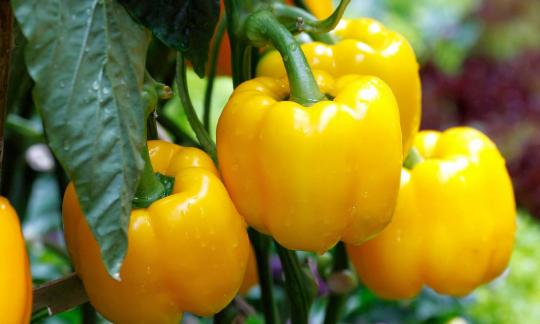

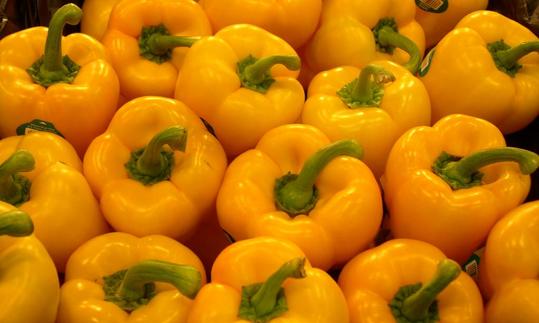

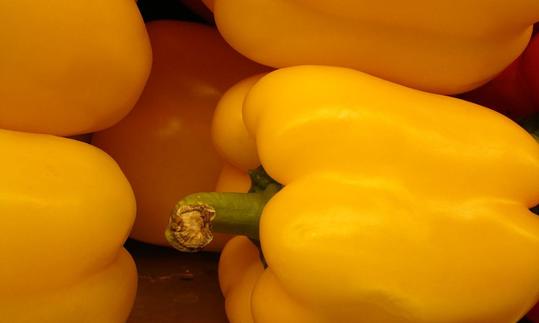

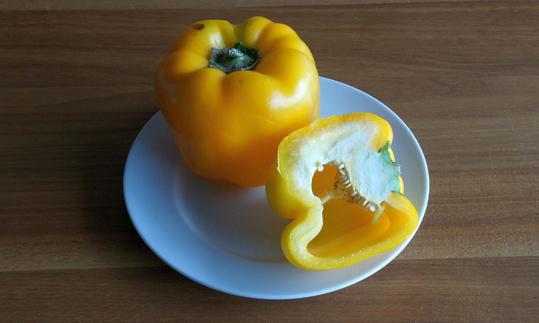


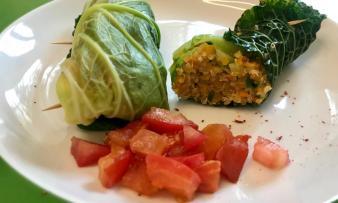
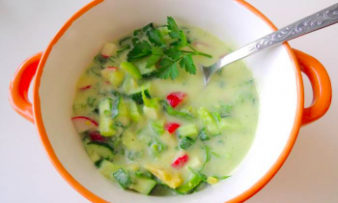





Comments